Debian version history
[3] The stable branch is considered the primary release and what most people refer to when talking about Debian.Testing has significantly more up-to-date packages than stable and is frozen some time before a release to become the next version of Debian.[5] Debian Unstable, known as "Sid", contains all the latest packages as soon as they are available, and follows a rolling-release model.[7] On average about every two years, Debian Testing enters a "freeze" cycle, where new packages are held back unless they fix critical bugs.[93] The package management system dpkg and its front-end dselect were developed and implemented on Debian in a previous release.The front-end APT was introduced for the package management system and Debian was ported to Alpha and SPARC.New packages included the display manager GDM, the directory service OpenLDAP, the security software OpenSSH and the mail transfer agent Postfix.KDE was introduced and Debian was ported to the following architectures: IA-64, PA-RISC (hppa), mips and mipsel and IBM ESA/390 (s390).[176][177][34][35] Squeeze was the first release of Debian in which non-free firmware components (aka "binary blobs") were excluded from the "main" repository as a matter of policy.[241] Available desktops include Cinnamon 3.8, GNOME 3.30, KDE Plasma 5.14, LXDE 0.99.2, LXQt 0.14, MATE 1.20, Xfce 4.12.Key application software includes LibreOffice 6.1 for office productivity, VLC 3.0 for media viewing, and Firefox ESR for web browsing.[259] On 12 November 2020, it was announced that "Homeworld", by Juliette Taka, will be the default theme for Debian 11, after winning a public poll held with eighteen choices.Starting with Debian 12, non-free firmware packages from the "non-free-firmware" section of the Debian archive was enabled by default in the official installer and live images if and when the system determines that these packages are required, such as with modern Wi-Fi cards and modern graphics cards.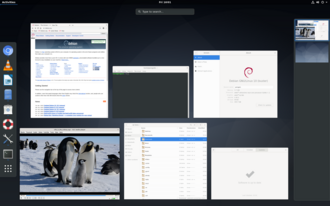








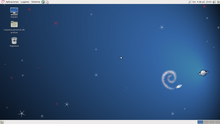

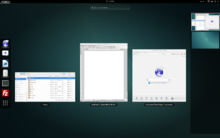

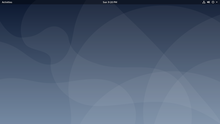
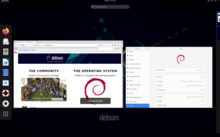
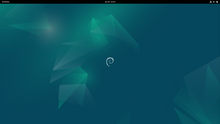

Debianfrozennames of charactersToy Storyrolling-release modelLinux kernelLong-termdselectIntel 80386Motorola 68000 seriesdisplay managerdirectory serviceOpenLDAPsecurity softwareOpenSSHmail transfer agentPostfixPowerPCPA-RISCmips and mipselIBM ESA/390 (s390)debian-installerOpenOffice.orgx86-64ARM EABIChromiumkfreebsd-i386 and kfreebsd-amd64Intel 486IBM z/Architecture (s390x)systemdsysvinitupstartppc64lekfreebsd-amd64 and kfreebsd-i38631-bit64-bitKDE Plasma 4Plasma 5LibreOfficeIntel i586 (Pentium)UEFI Secure BootAppArmorWaylandapplication softwareFirefox ESRKDE Plasma 5RISC-VKDE Plasma 6Endiankfreebsd-amd64kfreebsd-i386mips64elmipselUbuntu version historyLinux Mint version historyAMD K5Vortex86Cyrix IIIMediaGXWinchipIntel PentiumPhoronixDistroWatchSoftware in the Public InterestDebConfDebian Free Software GuidelinesDebian Social ContractProject leadersBdale GarbeeBenjamin Mako HillSam HocevarIan JacksonMartin MichlmayrIan MurdockJonathan OxerBruce PerensScott James RemnantStefano ZacchiroliDebian GNU/HurdDebian GNU/kFreeBSDDebian Pure BlendDevuanLinux Mint Debian EditionUbuntuaptitudeDebbugswin32-loaderDebian–Mozilla trademark dispute